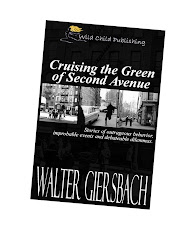We know [below] that POD titles are increasing and traditional print is dropping.
So, what makes POD attractive? Cover prices that are reduced. Royalties that accrue to the author in greater amounts. And, wider distribution through “long-tail” marketing. (A single outlet, like Amazon, carries hundreds of thousands of books, while a mass retailer is limited by store size.)
The "economic winter" that leaves traditional publishers shivering means they've virtually eliminated marketing and promotion for all except major (i.e., money-making) authors. At the same time, publishers continue to hold sacred the Depression-era practice of accepting the return of any book that the retailer cannot sell. This strange marketing practice began as a way to ensure that retailers would continue to stock new titles. In 2005, the Association of American Publishers reports that of the 1.5 billion books shipped, 455 million were returned to publishers — 31 percent! — at the publishers’ expense.
Would General Electric ever consider shipping refrigerators to Wal-Mart under these consignment conditions? Or Ford Motors to its independent dealers?
Publishers are scrambling to meet the new paradigm by discounting, spiffing (Sales Performance Incentive Fund) the big box outlets, and flirting with new techniques. Textbook publishers are raising prices to outrageous heights while introducing CD workbooks on three-year revision cycles to reduce the effect of students reselling their old texts. Price cards, like Borders or Barnes & Noble “memberships,” are resulting in a barrage of e-mail solicitations and discounting. And prices continue to rise, with e-books often marketed at over 80% of the hardcover price.
Pricing is the new battlefield. In October 2010, I searched Barnes & Noble for Special Projects in Calamity Physics by Marisha Plessl. This 2006 novel had been an immediate bestseller. Now, Amazon is discounting the trade paperback down from $15.00 to $10.50, while offering a Kindle download for $12.99. Barnes & Noble listed the trade paper at $10.80 and the e-book at $12.99.
Take a deep breath and think about it. It doesn’t take a wizard to know something’s wrong when the price of a digital product approaches or exceeds the cost of a formatted, typeset, printed, bound and shipped version that is subject to returns.
Wednesday, February 23, 2011
Subscribe to:
Post Comments (Atom)



No comments:
Post a Comment